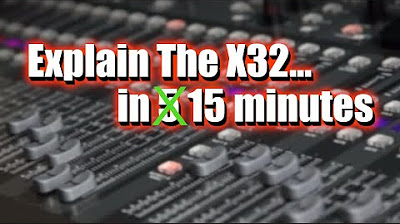Types of Institutions: Overview
Summary
TLDRIn this video, Dave from Go Study provides an overview of the U.S. higher education system. He explains its structure, distinguishing between public and private institutions, and highlights its optional nature, unlike primary and secondary education. He discusses the rise of for-profit schools and the growing number of international students, along with the specialized programs that support them. The video also touches on different types of institutions, such as community colleges and online education, promising more details in future lessons.
Takeaways
- 📚 **Higher Education in the US**: It's the final stage of formal learning and is optional, unlike primary and secondary education.
- 💼 **Funding Differences**: Public schools receive funding from state taxes, while private schools rely on tuition and donations.
- 🏛️ **Institution Types**: The US higher education system consists of both public and private schools, with most operating as non-profit institutions.
- 📈 **For-Profit Institutions**: There's been a rise in for-profit schools, but they are often more expensive and not as highly regarded.
- 🌐 **International Students**: US colleges and universities value international students for their hard work and diverse perspectives.
- 💵 **Tuition and Fees**: International students typically pay higher tuition rates and may not qualify for public school tuition benefits.
- 🏫 **Support for Internationals**: Many schools offer intensive English programs and special services to help international students adjust.
- 📊 **Trends in Enrollment**: The document provided shows trends in international student enrollments, including their origins and fields of study.
- 🏛️ **Varieties of Institutions**: Upcoming lessons will cover various types of higher education institutions, including community colleges and online programs.
- 👨🏫 **Educational Focus**: The lessons aim to provide detailed information about different higher education options and their characteristics.
Q & A
What does the term 'higher education' refer to in the United States?
-In the United States, 'higher education' refers to tertiary or post-secondary education, which is the final stage of formal learning following primary and secondary schooling.
Is higher education in the U.S. mandatory for citizens?
-No, higher education in the U.S. is optional and not required by law, unlike primary and secondary education.
Who bears the cost of higher education in the U.S.?
-Students themselves have to pay for higher education in the U.S., as it is not funded by the government.
How many institutions and students does the U.S. higher education system consist of?
-The U.S. higher education system consists of over 5,000 institutions and 21 million students.
What is the main difference between public and private schools in the U.S.?
-The main difference is in their funding; public schools receive a portion of their funding from state taxes, while private schools receive no state funding and rely on tuition and donations.
Are most U.S. colleges and universities operated as nonprofit institutions?
-Yes, most U.S. colleges and universities, regardless of being public or private, are operated as nonprofit institutions.
What is the trend regarding for-profit higher education schools in recent years?
-The number of for-profit higher education schools has grown in recent years, but they are generally not recommended due to their higher costs and lower quality compared to non-profit schools.
Why do U.S. colleges and universities value international students?
-U.S. colleges and universities value international students because they work hard, add diverse perspectives to the classroom, and often pay higher tuition rates.
What services are offered by schools to accommodate the growing number of international students?
-Many schools now offer intensive English programs and special services to help international students with acculturation, housing, work, and visa and immigration regulations.
What does the document mentioned in the script provide?
-The document provides trends and snapshots of international student enrollments at U.S. schools, detailing where most international students are from, what and where they are studying, and how they are paying for school.
What types of higher education institutions will be discussed in the upcoming lessons?
-The upcoming lessons will discuss different types of higher education institutions including intensive English programs, community colleges, colleges and universities, online education programs, and special focus schools.
Outlines

此内容仅限付费用户访问。 请升级后访问。
立即升级Mindmap

此内容仅限付费用户访问。 请升级后访问。
立即升级Keywords

此内容仅限付费用户访问。 请升级后访问。
立即升级Highlights

此内容仅限付费用户访问。 请升级后访问。
立即升级Transcripts

此内容仅限付费用户访问。 请升级后访问。
立即升级5.0 / 5 (0 votes)






